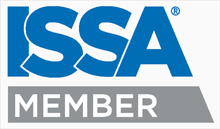Germs in Schools that make our Kids Sick
This articles reviews the key germs that can impact the spread of contagious illness in our schools. It also offers advice on strategies to prevent the spread of illness.
While there are many contagious pathogens, the ones that cause illness related absenteeism are the most important. It is estimated that 60 million school days are lost each year due to the flu and the common cold.
The FLU is caused by a variety of Influenza viruses. The most common are the influenza A viruses, which included the H1N1 virus responsible for the 2009 FLU pandemic. The Flu is spread from person to person when a person coughs, sneezes, or touches things that others use. The flu virus can survive on surfaces for 2-8 hours.
The CDC recommends using a disinfectant that kills the influenza A virus, it doesn’t necessarily have to kill all the Influenza A varieties.
FLYER: Everyday actions to prevent the spread of contagious illnesses like the flu
The common cold is most frequently caused by Rhinoviruses, but other viruses can also cause colds. The common cold is easily spread through the air, person to person contact, or by touching contaminated objects.
Food Poisoning: Sometimes you hear the word stomach flu when associated with sickness that includes vomiting and/or diarrhea. This often is food poisoning. While we often associate food poisoning with salmonella or e-coli, the biggest culprit is a virus called NOROVIRUS. In fact, Norovirus is responsible for more foodborne illnesses than salmonella and e-coli combined!
Norovirus related illnesses are highly contagious. News stories about school closures due to rampant norovirus related illnesses have become fairly common. Or you may have heard of some high profile restaurant chains where norovirus related food poisoning was responsible for making many patrons sick.
Norovirus is found in the stool of vomit of infected people. It is spread by fecally contaminated food or water, by touching contaminated individuals, or by touching contaminated objects. Norovirus can survive on surfaces up to 72 hours.
TIP: If you are concerned about Norovirus, make sure the disinfectant you are using has a claim for Norovirus, many disinfectants DO NOT have Norovirus claims.
From our Technical Library: Norovirus Outbreaks in Schools, planning and response
Strep Throat: Strep throat is a bacterial infection of the throat caused by several types bacteria. Staphyloccocus aureus is the most common bacteria that is responsible for causing Strep throat.
Pink Eye: Pink eye can be caused by a number of different bacteria and viruses. It is quite contagious and is usually categorized and diagnosed as viral pink eye or bacterial pink eye.
Preventing the spread of contagious illnesses: Follow this information with links to more resources:
Wash Hands regularly:
Washing hands regularly, particularly after using the restroom is the single most important thing a person can do to protect themselves and prevent the spread of illness. Where water is not available, instant hand sanitizers can be used.
“It’s a SNAP” is a non-profit organization that promotes hand hygiene in schools. They have an educational program that can help schools educate students on the importance of hand washing.
Infection Control and High Touch Cleaning and Disinfecting
Helpful Link from the CDC: Cleaning and Disinfecting in Schools to prevent the spread of illness
Disinfecting floor to sealing is a waste of time. Best practices say to focus disinfecting efforts on “high touch surfaces”.
Cleaning up blood or bodily fluids
Bodily fluids, particularly vomit can spread some contagious diseases, most notably norovirus. In the Technical Bulletin below, we discuss how to safely and effectively clean up blood or bodily fluid spills in schools and other non-healthcare institutions.
Multi-Clean Technical Library: Cleaning up Bodily Fluid Spills
Infection Control Guidelines for Schools:
Develop a plan for dealing with infectious disease outbreaks helps prevent panic and ineffective responses.
While there are many more infectious illnesses that can be spread in schools, the ones covered in this post are far and away the most prevalent.
Multi-Clean makes a number of disinfectant products for use in preventing the spread of contagious illnesses:
Microcide TB: A ready to use “fast kill” disinfect. Kills norovirus in 30 seconds.
Millennium Q: A concentrated hospital grade disinfectant. Kills norovirus.
Century Q: A concentrated, hospital grade neutral disinfectant cleaner.
Century Q wipes: Pre-moistened wipes kills 99.9% of bacteria in 15 seconds. Effective on Norovirus.

